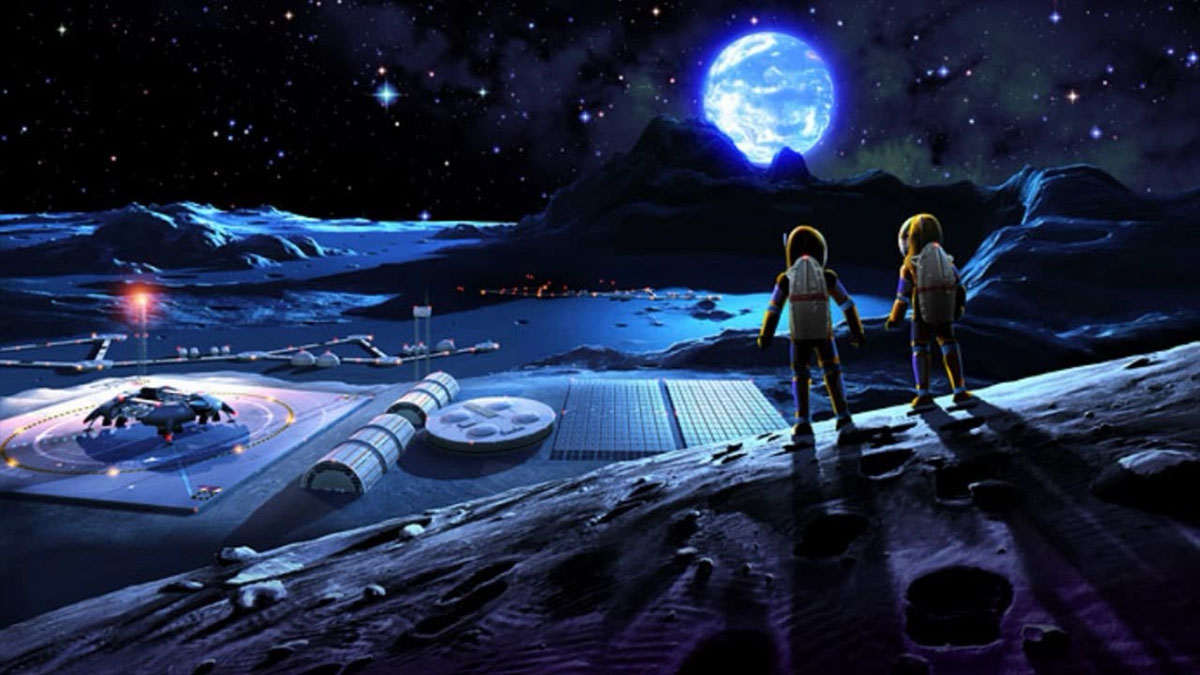how to keep exploring space semi-vicariously

One of the recent ideas in space exploration tries to avoid landing astronauts on other worlds, risking exposure to dangerous radiation and alien weather. Instead, the plan would be to build a wonderful long-term space habitat equipped with a small army of robots to be deployed to Mars and other exotic destinations, and then remotely piloted by the astronauts from orbit. And quite honestly, the astronauts are only there because the lag in communication between the robots and mission control is just too large. Raduce it to 500 milliseconds and below, and you’ve got an almost perfect telepresence on the surface of another moon or planet while the humans float or slowly rotate in the relative safety of their craft hundreds if not thousands of miles above. And as the plan to get NASA back to exploring space with humans, this idea could be field-tested on the dark side of the Moon. The basic plan is to send a capsule with a small crew of astronauts to the stable L2 orbital point to hover over the Moon and operate a small swarm of robots.
What would these robots do? Some would explore craters with particularly interesting geology. Others would set up a radio telescope to peer far into the cosmos. Others still might even test a few concepts that could help steer their mechanical successors on Mars. But hold on a second, since we’re doing this with robots and robots could be much more autonomous in the future, why even bother sending humans ask critics like those in the cited arXiv blog post? Why not just give rovers, flyers, and other bots the lead and watch their progress from Earth? It would cost much less than human missions and be much safer for all those involved. However, let’s keep in mind that making our space-faring robots smarter is no easy feat and there are a lot of fundamental problems with handing over a complex cognitive task like exploring alien worlds to robots with little human oversight. We can learn to abandon a $500 million mission when it breaks down or crashes into an alien desert; in fact, we understand that it’s an ever-present risk. But more sophisticated and intelligent machines will not be so easy to write off as being lost to space.
These robots will have to be larger, more expensive, and thus more difficult to abandon should something go wrong. They’ll have to accommodate bigger power sources and more powerful and better shielded circuitry, huge investments that would make Curiosity’s hefty price tag look like a real bargain. No economies of scale will offset this anytime soon because this technology is still being developed and having even a few dozen copies built will not offset the R&D costs. And in even the best case scenario, they’ll have the mental capacity of a family pet, enough to do a bit of intelligent poking around, but certainly not enough to solve daunting challenges on worlds we still don’t know very well. Humans will be needed to make complex decisions and they may need to make them quickly, so planning multi-month rescue projects and last minute patches from the safety and seclusion of Earth may not always be an option. Likewise, why take months to fix an issue when a human nearby could tackle it in a few days if not just hours or minutes?
Don’t we want to actually explore the cosmos? If so, why hold up the exploration schedule and refuse to invest in the technology that allows humans and machines to partner up and explore a new world together? We can develop explorers, builders, and maintenance bots working under human direction, then use them on Earth for our own projects like infrastructure updates, a new skyscraper, and even medicine. Is all this expensive and really ambitious? Absolutely. But if we invest in science and technology, the payoffs from successful projects are always worth it since they create new industries, new jobs, new ideas, and allow us to do new things. Without the use of new types of integrated circuitry on Apollo to prove their capability and ruggedness, it’s more than likely a safe bet that your smartphone and tablets. as well as your laptops. would’ve arrived decades later than they did, if they would’ve even been developed at all. And without ambitious, outlandish, and challenging projects, how do we advance as a civilization? Sure, we could just launch a few robots to the Moon to do their jobs. But how will we learn to effectively partner with them to explore deep space and worlds still waiting for us to study them?





